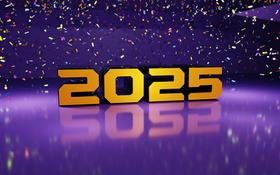For the 2025-26 school year, there are 2 public schools serving 1,294 students in Monroeville, IN (there are 2 private schools, serving 219 private students). 86% of all K-12 students in Monroeville, IN are educated in public schools (compared to the IN state average of 89%).
The top ranked public schools in Monroeville, IN are Heritage Elementary School and Heritage Jr/sr High School. Overall testing rank is based on a school's combined math and reading proficiency test score ranking.
Monroeville, IN public schools have an average math proficiency score of 33% (versus the Indiana public school average of 39%), and reading proficiency score of 37% (versus the 41% statewide average). Schools in Monroeville have an average ranking of 3/10, which is in the bottom 50% of Indiana public schools.
Minority enrollment is 41% of the student body (majority Asian and Black), which is more than the Indiana public school average of 37% (majority Hispanic and Black).
Best Public Schools in Monroeville, IN (2025-26)
School
(Math and Reading Proficiency)
(Math and Reading Proficiency)
Location
Quick Facts
Rank: #11.
Heritage Elementary School
(Math: 42% | Reading: 38%)
Rank:
Rank:
5/
Bottom 50%10
12050 Houk Rd
Monroeville, IN 46773
(260) 446-0160
Monroeville, IN 46773
(260) 446-0160
Gr: K-6 | 520 students Student-teacher ratio: 16:1 Minority enrollment: 37%
Rank: #22.
Heritage Jr/sr High School
(Math: 24% | Reading: 37%)
Rank:
Rank:
4/
Bottom 50%10
13608 Monroeville Rd
Monroeville, IN 46773
(260) 446-0140
Monroeville, IN 46773
(260) 446-0140
Gr: 7-12 | 774 students Student-teacher ratio: 15:1 Minority enrollment: 44%
Monroeville, Indiana Public Schools (Closed)
School
Location
Quick Facts
401 South Monroe St
Monroeville, IN 46773
(260) 446-0200
Monroeville, IN 46773
(260) 446-0200
Gr: K-6 | 177 students Student-teacher ratio: 20:1 Minority enrollment: 7%
Frequently Asked Questions
What are the top ranked public schools in Monroeville, IN?
The top ranked public schools in Monroeville, IN include Heritage Elementary School and Heritage Jr/sr High School.
How many public schools are located in Monroeville?
2 public schools are located in Monroeville.
What percentage of students in Monroeville go to public school?
86% of all K-12 students in Monroeville are educated in public schools (compared to the IN state average of 89%).
What is the racial composition of students in Monroeville?
Monroeville public schools minority enrollment is 41% of the student body (majority Asian and Black), which is more than the Indiana public schools average of 37% (majority Hispanic and Black).
Recent Articles

Texas Schools Enrollment Trends & Policy in 2025
Latest data and policy changes on Texas public school enrollment growth, funding, and virtual education in 2025.

Financial Aid & Hidden Costs in Public Schools
Learn about financial aid and hidden costs in public schools. Discover what parents should budget for beyond tuition-free education.

NYC Schools Still Most Segregated in 2025
Despite reforms, New York City schools remain the most segregated in the U.S. in 2025. Here’s what parents and educators need to know.
